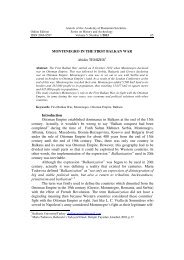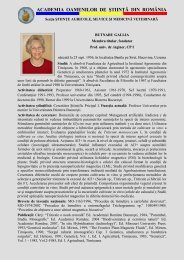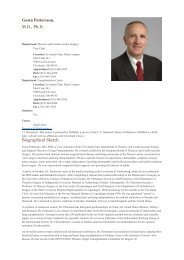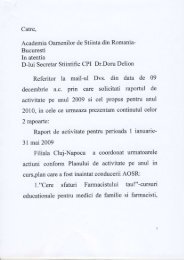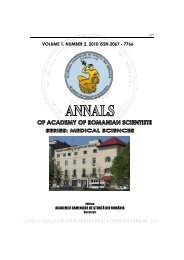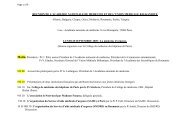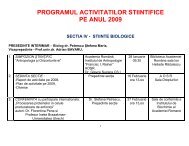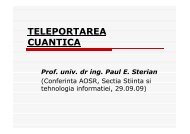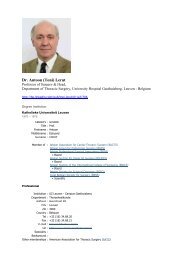Volume 3 nr 1 / 2011 - Academia Oamenilor de Stiinta din Romania
Volume 3 nr 1 / 2011 - Academia Oamenilor de Stiinta din Romania
Volume 3 nr 1 / 2011 - Academia Oamenilor de Stiinta din Romania
- No tags were found...
Create successful ePaper yourself
Turn your PDF publications into a flip-book with our unique Google optimized e-Paper software.
106 Liviu Muresan, Septimiu CaceuCritical infrastructures are not and do not become critical only because of attacks,but also due to other causes, human, as well as technical, some of them difficult tobe i<strong>de</strong>ntified and analysed. Generally speaking, especially after the terroristattacks of the 11th September 2001 on the World Tra<strong>de</strong> Centre and Pentagon, it isconsi<strong>de</strong>red that infrastructures are or can become critical due to terrorist attacks orother threats, especially asymmetrical ones.This is only one aspect or criterion for the i<strong>de</strong>ntification of critical infrastructures.However, there are also other criteria, which <strong>de</strong>pend both on the stability andfunctioning of systems and processes, as well as on the interconnectivity of thosewith the exterior environment. In this context, the analysis of the criticalinfrastructures issues has to take into account all dimensions and implications ofthe systems’ and processes’ stability and functionality, as well as the causalinterlinking that can generates or influence their dynamic.The criteria used for such analysis is variable, even if their area of coverage couldbe the same. The predominant criteria for analysis, mentioned in the specializedliterature are the following: Physical criterion, regar<strong>din</strong>g the positioning within other infrastructures(size, spread, endurance, reliability etc.); Functional criterion, regar<strong>din</strong>g the infrastructure’s role (what exactly doesit “do“); Security criterion (what is its role for the overall safety and security of thesystem); Flexibility criterion (reflecting the dynamic and flexibility in <strong>de</strong>fininginfrastructures as critical; some of the or<strong>din</strong>ary infrastructures become un<strong>de</strong>rcertain circumstances critical ones and vice-versa); Unpredictability criterion, (consi<strong>de</strong>ring that some of the or<strong>din</strong>aryinfrastructures can become sud<strong>de</strong>nly critical infrastructures).Critical infrastructures have at least three components of critical phases: Internal component, <strong>de</strong>fined through the increase (either direct or induced)of infrastructure vulnerabilities with an important role in the functioning andsecurity of the system; External component, referring to the exterior stability and functioning i<strong>nr</strong>elationship to the systems the infrastructure is integrated in or associated to; Interface component, <strong>de</strong>fined through the multitu<strong>de</strong> of neighbouringinfrastructures, which do not belong to the system as such, but influence itsstability, functioning and security.Copyright © Editura Aca<strong>de</strong>miei <strong>Oamenilor</strong> <strong>de</strong> Știință <strong>din</strong> România, <strong>2011</strong>Watermark Protected



